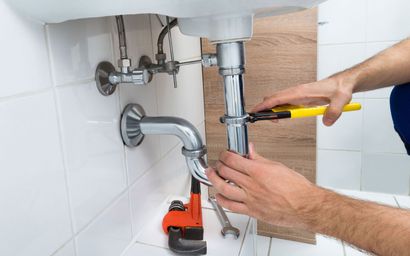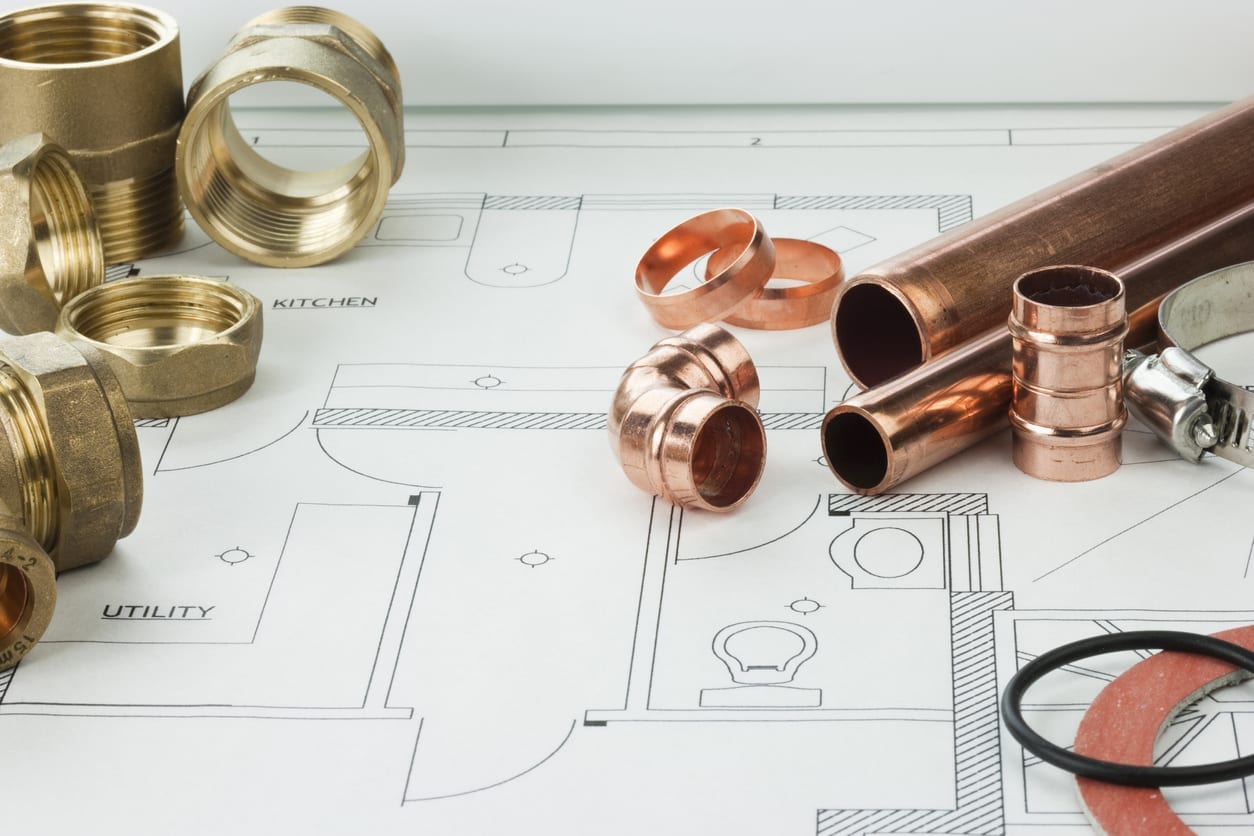A Guide to Your House's Plumbing System Anatomy
A Guide to Your House's Plumbing System Anatomy
Blog Article
Here below you can get lots of extremely good help and advice about The Inner Workings of Your Home's Plumbing.

Comprehending how your home's plumbing system works is important for each property owner. From delivering clean water for drinking, cooking, and bathing to safely eliminating wastewater, a properly maintained pipes system is essential for your household's health and wellness and comfort. In this thorough guide, we'll check out the complex network that makes up your home's plumbing and offer suggestions on maintenance, upgrades, and dealing with typical problems.
Introduction
Your home's plumbing system is more than just a network of pipelines; it's an intricate system that ensures you have accessibility to tidy water and reliable wastewater elimination. Recognizing its elements and how they work together can aid you protect against expensive repair services and make sure whatever runs smoothly.
Fundamental Components of a Pipes System
Pipelines and Tubes
At the heart of your plumbing system are the pipes and tubing that lug water throughout your home. These can be constructed from numerous materials such as copper, PVC, or PEX, each with its advantages in terms of resilience and cost-effectiveness.
Components: Sinks, Toilets, Showers, etc.
Fixtures like sinks, bathrooms, showers, and tubs are where water is utilized in your house. Recognizing exactly how these fixtures link to the plumbing system assists in identifying problems and planning upgrades.
Shutoffs and Shut-off Factors
Shutoffs regulate the circulation of water in your plumbing system. Shut-off valves are essential during emergencies or when you need to make repairs, allowing you to isolate parts of the system without interfering with water flow to the entire residence.
Water System System
Main Water Line
The major water line links your home to the municipal water system or a personal well. It's where water enters your home and is distributed to different fixtures.
Water Meter and Stress Regulator
The water meter measures your water use, while a pressure regulator guarantees that water flows at a secure stress throughout your home's pipes system, avoiding damages to pipes and fixtures.
Cold Water vs. Warm water Lines
Recognizing the distinction in between cold water lines, which provide water directly from the main, and warm water lines, which bring heated water from the water heater, aids in troubleshooting and preparing for upgrades.
Water drainage System
Drain Pipes and Traps
Drain pipelines bring wastewater away from sinks, showers, and toilets to the sewage system or sewage-disposal tank. Traps protect against sewage system gases from entering your home and likewise trap particles that might cause obstructions.
Ventilation Pipes
Air flow pipes allow air right into the water drainage system, stopping suction that could reduce drain and cause catches to empty. Proper air flow is important for keeping the stability of your plumbing system.
Relevance of Appropriate Drainage
Making sure proper drainage protects against backups and water damage. Consistently cleaning up drains and preserving traps can prevent pricey repairs and prolong the life of your pipes system.
Water Heating System
Types of Water Heaters
Hot water heater can be tankless or traditional tank-style. Tankless heating units warmth water as needed, while tanks keep warmed water for prompt use.
Exactly How Water Heaters Link to the Plumbing System
Comprehending exactly how hot water heater attach to both the cold water supply and hot water circulation lines helps in identifying problems like not enough hot water or leaks.
Maintenance Tips for Water Heaters
On a regular basis purging your hot water heater to get rid of sediment, checking the temperature setups, and checking for leakages can expand its lifespan and improve energy effectiveness.
Typical Pipes Concerns
Leakages and Their Reasons
Leaks can occur due to aging pipes, loose fittings, or high water stress. Attending to leaks immediately stops water damage and mold growth.
Blockages and Obstructions
Blockages in drains pipes and bathrooms are commonly triggered by flushing non-flushable products or an accumulation of grease and hair. Using drain displays and bearing in mind what drops your drains can avoid blockages.
Indications of Plumbing Problems to Watch For
Low water stress, slow-moving drains pipes, foul odors, or abnormally high water costs are indications of prospective plumbing problems that ought to be addressed promptly.
Pipes Upkeep Tips
Routine Assessments and Checks
Arrange annual plumbing examinations to capture problems early. Try to find indications of leaks, rust, or mineral accumulation in taps and showerheads.
Do It Yourself Upkeep Tasks
Basic jobs like cleansing tap aerators, looking for toilet leaks making use of color tablets, or insulating revealed pipelines in chilly environments can stop major pipes concerns.
When to Call an Expert Plumbing
Know when a plumbing concern requires specialist knowledge. Trying complicated repairs without appropriate expertise can result in even more damages and higher fixing expenses.
Updating Your Pipes System
Reasons for Updating
Upgrading to water-efficient components or changing old pipelines can boost water top quality, minimize water expenses, and increase the value of your home.
Modern Pipes Technologies and Their Advantages
Check out technologies like clever leak detectors, water-saving toilets, and energy-efficient water heaters that can conserve cash and decrease environmental influence.
Expense Considerations and ROI
Calculate the ahead of time costs versus long-term financial savings when thinking about plumbing upgrades. Several upgrades pay for themselves through lowered energy bills and less repair services.
Environmental Impact and Conservation
Water-Saving Components and Home Appliances
Installing low-flow taps, showerheads, and bathrooms can considerably lower water use without sacrificing efficiency.
Tips for Minimizing Water Usage
Straightforward practices like fixing leakages quickly, taking much shorter showers, and running full tons of laundry and recipes can conserve water and reduced your utility costs.
Eco-Friendly Plumbing Options
Take into consideration lasting plumbing products like bamboo for flooring, which is durable and green, or recycled glass for countertops.
Emergency situation Preparedness
Actions to Take During a Pipes Emergency situation
Know where your shut-off valves lie and how to switch off the supply of water in case of a ruptured pipe or significant leak.
Importance of Having Emergency Get In Touches With Useful
Keep get in touch with info for neighborhood plumbing professionals or emergency services readily available for quick response during a plumbing crisis.
DIY Emergency Fixes (When Applicable).
Temporary fixes like using air duct tape to spot a dripping pipeline or positioning a pail under a leaking tap can lessen damage up until an expert plumbing gets here.
Verdict.
Recognizing the makeup of your home's pipes system empowers you to maintain it effectively, conserving money and time on fixings. By adhering to normal upkeep regimens and staying informed about modern plumbing innovations, you can ensure your plumbing system operates efficiently for years to come.
HOW YOUR PLUMBING SYSTEM WORKS
Which Pipes Do What?
Blue lines = fresh water supply entering the building
Red lines = hot water supply entering the building
Grey lines = pipes carrying waste away from the building and venting pipes carrying gases away from the building (through the roof)
YOUR MAIN PLUMBING SYSTEMS
There are two main plumbing systems that support your home s basic plumbing needs one that brings clean water into your home, and one that sends dirty water away from your home. Connected to the toilet, bath, shower, and other faucets in your home, these two systems keep your water flowing in the right directions.
ACCESSING FRESH WATER
Fresh and clean water is brought into your home through the main water supply line . Filtered through one pipe, this water is pressured to flow into the various fixtures in your home at any given time.
This water can be sourced from a well located on your property, a pond or river (mostly cottages), or, as in most cases, from the city s municipal water treatment centre. However, it is important to note that water that is untreated, such as the water siphoned from ponds or rivers, may not be safe to drink. Personal water supplies always need to be treated for hardness and contaminants before consumed.
MUNICIPAL WATER SUPPLIES
Improve taste and odour
Remove sediment
Eliminate hardness
Reduce chlorine
COLD WATER SUPPLY VS. HOT WATER SUPPLY
Cold water flows into your home or building through the service line, which then distributes hot or cold water to your fixtures. This line is most commonly run through a central column that runs floor to floor. Hot water runs in short and straight pipes as the longer the pipeline, the more heat that will be lost in the transfer. Having shorter pipes also allows residents to access hot water more quickly.
WASTE WATER SYSTEM
Your wastewater system is divided into two parts pipes that send wastewater away from your home and venting pipes that send sewer gas away from your home. Sewage water travels through pipes that flush the water and waste towards local sewers that are operated and managed by your city or town. Most sewer systems rely on gravity to move the wastewater to where it needs to go.
The further away from your toilet or sink, the larger wastewater pipes become. This allows for waste to be disposed of from various parts of your home or business at once without pipe blockages. The angle and flow of these pipes are also essential for keeping your waste pipes clear of build up.
https://harrisplumbing.ca/how-your-home-plumbing-system-works/

HOW YOUR PLUMBING SYSTEM WORKS
Which Pipes Do What?
YOUR MAIN PLUMBING SYSTEMS
There are two main plumbing systems that support your home s basic plumbing needs one that brings clean water into your home, and one that sends dirty water away from your home. Connected to the toilet, bath, shower, and other faucets in your home, these two systems keep your water flowing in the right directions.
ACCESSING FRESH WATER
Fresh and clean water is brought into your home through the main water supply line . Filtered through one pipe, this water is pressured to flow into the various fixtures in your home at any given time.
This water can be sourced from a well located on your property, a pond or river (mostly cottages), or, as in most cases, from the city s municipal water treatment centre. However, it is important to note that water that is untreated, such as the water siphoned from ponds or rivers, may not be safe to drink. Personal water supplies always need to be treated for hardness and contaminants before consumed.
MUNICIPAL WATER SUPPLIES
COLD WATER SUPPLY VS. HOT WATER SUPPLY
Cold water flows into your home or building through the service line, which then distributes hot or cold water to your fixtures. This line is most commonly run through a central column that runs floor to floor. Hot water runs in short and straight pipes as the longer the pipeline, the more heat that will be lost in the transfer. Having shorter pipes also allows residents to access hot water more quickly.
WASTE WATER SYSTEM
Your wastewater system is divided into two parts pipes that send wastewater away from your home and venting pipes that send sewer gas away from your home. Sewage water travels through pipes that flush the water and waste towards local sewers that are operated and managed by your city or town. Most sewer systems rely on gravity to move the wastewater to where it needs to go.
The further away from your toilet or sink, the larger wastewater pipes become. This allows for waste to be disposed of from various parts of your home or business at once without pipe blockages. The angle and flow of these pipes are also essential for keeping your waste pipes clear of build up.
https://harrisplumbing.ca/how-your-home-plumbing-system-works/
We were shown that editorial on Understanding Your Home's Plumbing Anatomy through a good friend on another web blog. I beg you take a moment to promote this article if you appreciated it. I take joy in your readership.
Visit Homepage Report this page